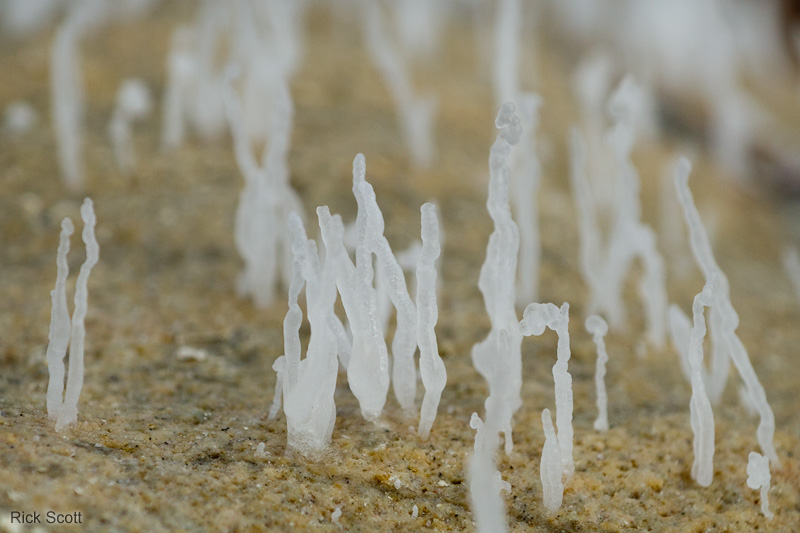
Sunset from my campsite
Lens: Internal 15.1-60.4 mm, set to 60.4mm
Exposure: 1/25 second at f/8
Camera Mode: ISO 800 RAW

Sunset with crescent moon
Lens: Internal 15.1-60.4 mm, set to 30.3mm
Exposure: 1/80 second at f/8
Camera Mode: ISO 800 RAW

Telescope Peak from above Golden Canyon
Lens: Internal 15.1-60.4 mm, set to 36.9mm
Exposure: 1/250 second at f/5.6 with a circular polarizer
Camera Mode: ISO 100 RAW

Golden Canyon with Manly Beacon in the background
Lens: Internal 15.1-60.4 mm, set to 38.6mm
Exposure: 1/125 second at f/8 with a circular polarizer
Camera Mode: ISO 100 RAW

A side canyon of Golden Canyon
Lens: Internal 15.1-60.4 mm, set to 24.5mm
Exposure: 1/250 second at f/8
Camera Mode: ISO 100 RAW

Looking over Golden Canyon from the base of Manly Beacon
Lens: Internal 15.1-60.4 mm, set to 15.1mm
Exposure: 1/200 second at f/8 with a circular polarizer
Camera Mode: ISO 100 RAW

Red Cathedral
Lens: Internal 15.1-60.4 mm, set to 33.0mm
Exposure: 1/125 second at f/8 with circular polarizer
Camera Mode: ISO 100 RAW

Telescope Peak from the base of Manly Beacon
Lens: Internal 15.1-60.4 mm, set to 49.5mm
Exposure: 1/125 second at f/8 with a circular polarizer
Camera Mode: ISO 100 RAW

Alone in the Desert - A phacelia in Gower Gulch
Lens: Internal 15.1-60.4 mm, set to 15.1mm
Exposure: 1/320 second at f/8
Camera Mode: ISO 100 RAW

Gower Gulch
Lens: Internal 15.1-60.4 mm, set to 15.1mm
Exposure: 1/500 second at f/8
Camera Mode: ISO 100 RAW

Salt formations
Lens: Internal 15.1-60.4 mm, set to 25.0mm
Exposure: 1/125 second at f/8
Camera Mode: ISO 400 RAW

Elephant salt formation
Lens: Internal 15.1-60.4 mm, set to 36.9mm
Exposure: 1/125 second at f/8
Camera Mode: ISO 400 RAW

Elephant salt formation
Lens: Internal 15.1-60.4 mm, set to 36.9mm
Exposure: 1/125 second at f/8
Camera Mode: ISO 400 RAW

Salt crystals
Lens: Internal 15.1-60.4 mm, set to 33.6mm
Exposure: 1/125 second at f/8
Camera Mode: ISO 400 RAW

Salt crystals
Lens: Internal 15.1-60.4 mm, set to 60.4mm with Canon 250D Close-up Lens
Exposure: 1/125 second at f/8
Camera Mode: ISO 400 RAW

Salt crystals
Lens: Internal 15.1-60.4 mm, set to 60.4mm with Canon 250D Close-up Lens
Exposure: 1/160 second at f/8
Camera Mode: ISO 400 RAW

Salt crystals
Lens: Internal 15.1-60.4 mm, set to 60.4mm with Canon 250D Close-up Lens
Exposure: 1/160 second at f/8
Camera Mode: ISO 400 RAW

Darwin Oasis
Lens: Internal 15.1-60.4 mm, set to 15.1mm
Exposure: 1/200 second at f/8
Camera Mode: ISO 100 RAW

Darwin Oasis
Lens: Internal 15.1-60.4 mm, set to 20.6mm
Exposure: 1/250 second at f/8
Camera Mode: ISO 100 RAW

Upper Darwin Falls
Lens: Internal 15.1-60.4 mm, set to 15.1mm
Exposure: 0.6 seconds (x4) at f/16 with buit-in ND3 filter
Camera Mode: ISO 100 RAW

Darwin Oasis - The pools below the upper falls
Lens: Internal 15.1-60.4 mm, set to 15.1mm
Exposure: 1/250 second at f/8
Camera Mode: ISO 100 RAW

Darwin Oasis - The chute and pool below the upper falls
Lens: Internal 15.1-60.4 mm, set to 21.7mm
Exposure: 1/250 second at f/8
Camera Mode: ISO 100 RAW

Darwin Oasis - Frogs (2 of 10 in this pool)
Lens: Internal 15.1-60.4 mm, set to 60.4mm
Exposure: 1/30 second at f/5.8
Camera Mode: ISO 100 RAW

Lower Darwin Falls
Lens: Internal 15.1-60.4 mm, set to 36.9mm
Exposure: 0.4 seconds at f/11 with buit-in ND3 filter
Camera Mode: ISO 200 RAW

Lower Darwin Falls
Lens: Internal 15.1-60.4 mm, set to 21.3mm
Exposure: 1.0 second at f/16 with buit-in ND3 filter
Camera Mode: ISO 200 RAW

Dead tree and Mesquite Flat Sand Dunes
Lens: Internal 15.1-60.4 mm, set to 22.9mm
Exposure: 1/320 second at f/8
Camera Mode: ISO 100 RAW

Mesquite Flat Sand Dunes and the Funeral Mountains
Lens: Internal 15.1-60.4 mm, set to 60.4mm
Exposure: 1/125 second at f/8
Camera Mode: ISO 100 RAW

Ripples on the Mesquite Flat Sand Dunes
Lens: Internal 15.1-60.4 mm, set to 60.4mm
Exposure: 1/250 second at f/8
Camera Mode: ISO 100 RAW

The high peaks of the Mesquite Flat Sand Dunes and the Grapevine Mountains
Lens: Internal 15.1-60.4 mm, set to 60.4mm
Exposure: 1/200 second at f/5.8
Camera Mode: ISO 100 RAW

Mesquite Flat Sand Dunes and the Funeral Mountains
Lens: Internal 15.1-60.4 mm, set to 41.3mm
Exposure: 1/200 second at f/5.6
Camera Mode: ISO 100 RAW

One of the narrows in Marble Canyon
Lens: Internal 15.1-60.4 mm, set to 39.7mm
Exposure: 1/30 second at f/8
Camera Mode: ISO 100 RAW

Igneous inclusions in Marble Canyon
Lens: Internal 15.1-60.4 mm, set to 60.4mm
Exposure: 1/15 second at f/5.8
Camera Mode: ISO 100 RAW

Barrel cactus high up the wall in Marble Canyon
Lens: Internal 15.1-60.4 mm, set to 60.4mm
Exposure: 1/125 second at f/5.8
Camera Mode: ISO 100 RAW

Looking up at the crescent moon in Marble Canyon (at the bathtub)
Lens: Internal 15.1-60.4 mm, set to 15.1mm
Exposure: 1/125 second at f/8
Camera Mode: ISO 100 RAW

A California poppy in Marble Canyon (at the bathtub)
Lens: Internal 15.1-60.4 mm, set to 60.4mm
Exposure: 1/60 second at f/5.8
Camera Mode: ISO 100 RAW

Death Valley from Dante's View (6 frame, 166 degree panorama)
Lens: Internal 15.1-60.4 mm, set to 15.1mm
Exposure: 1/400 second at f/8
Camera Mode: ISO 100 RAW